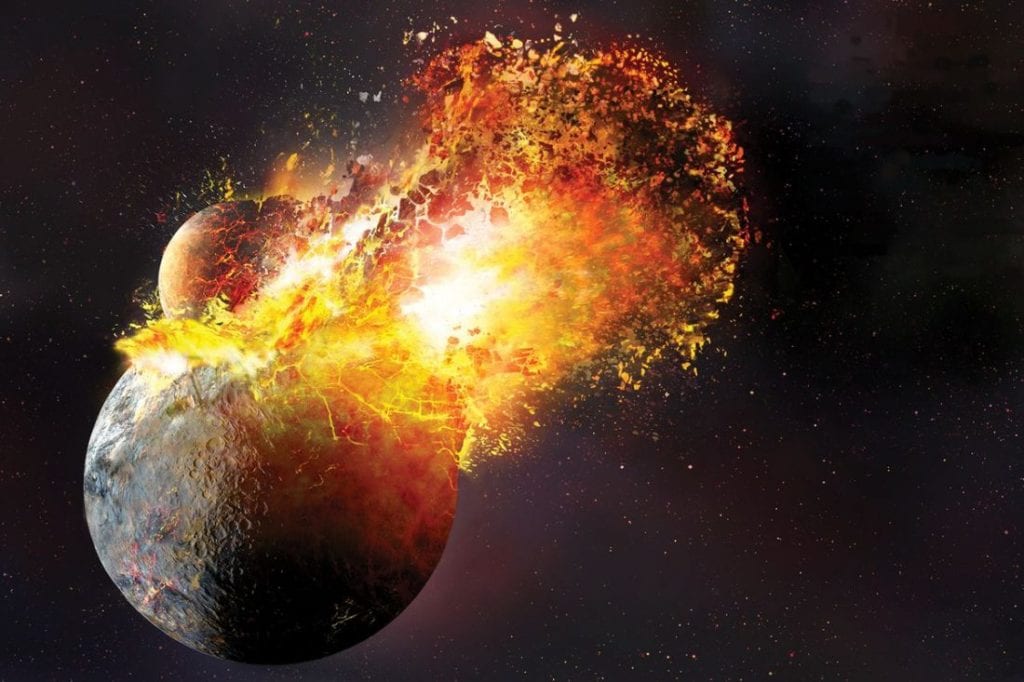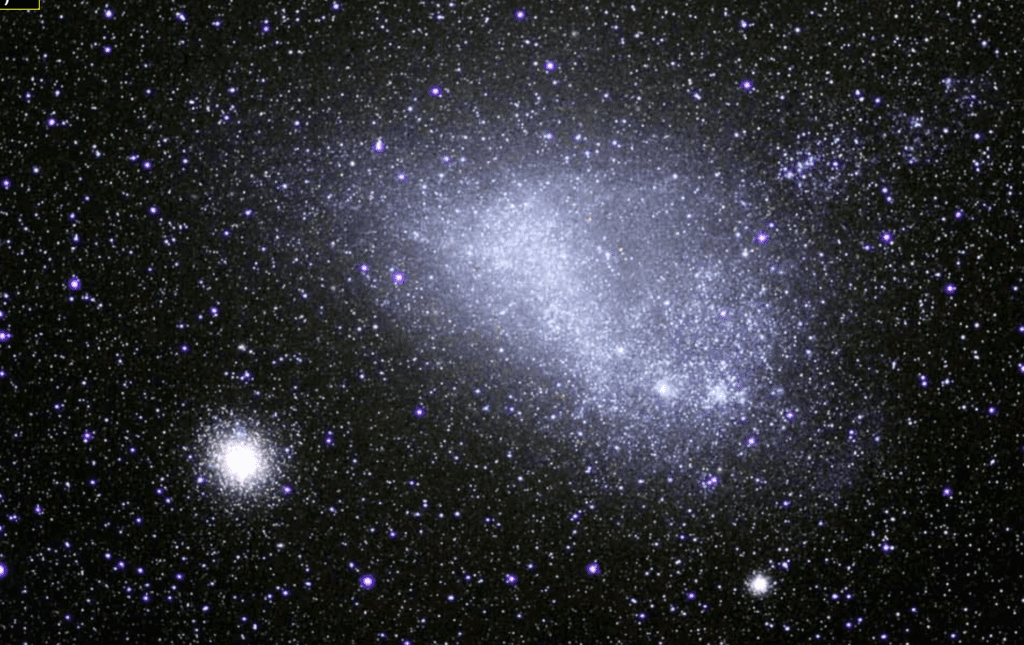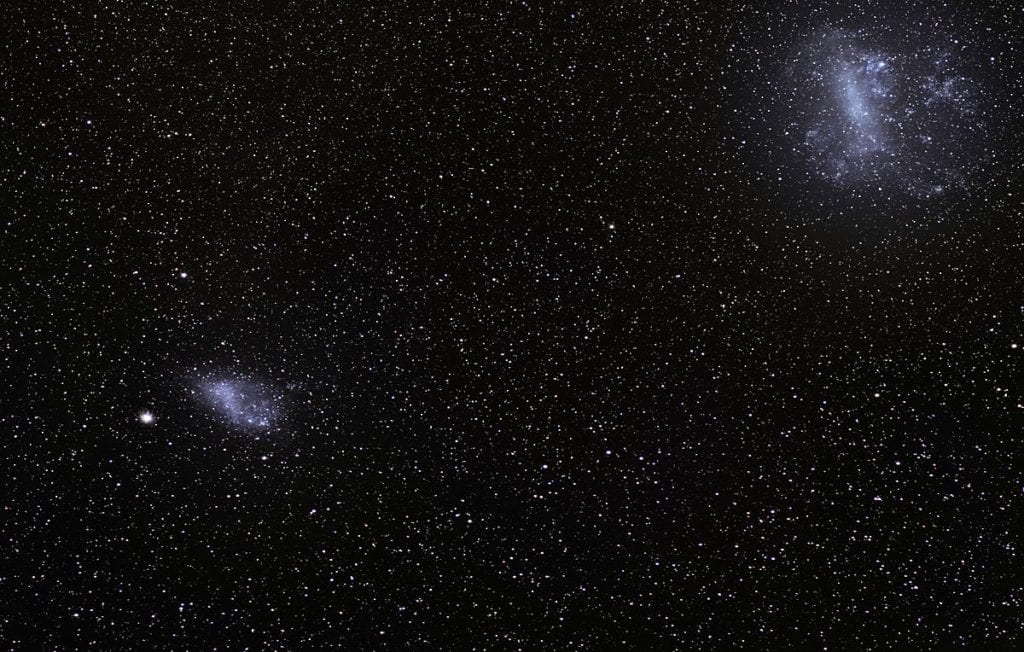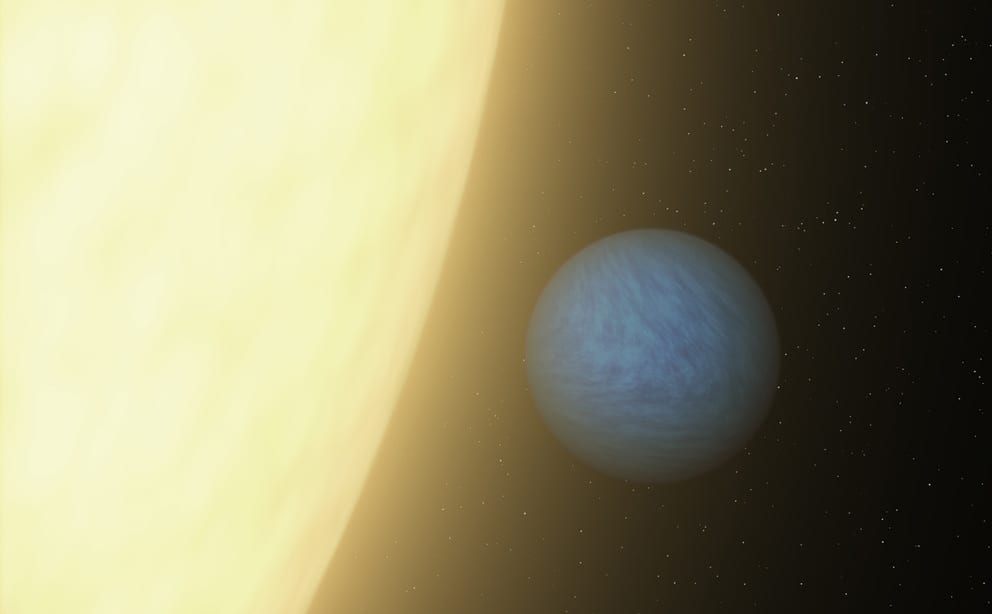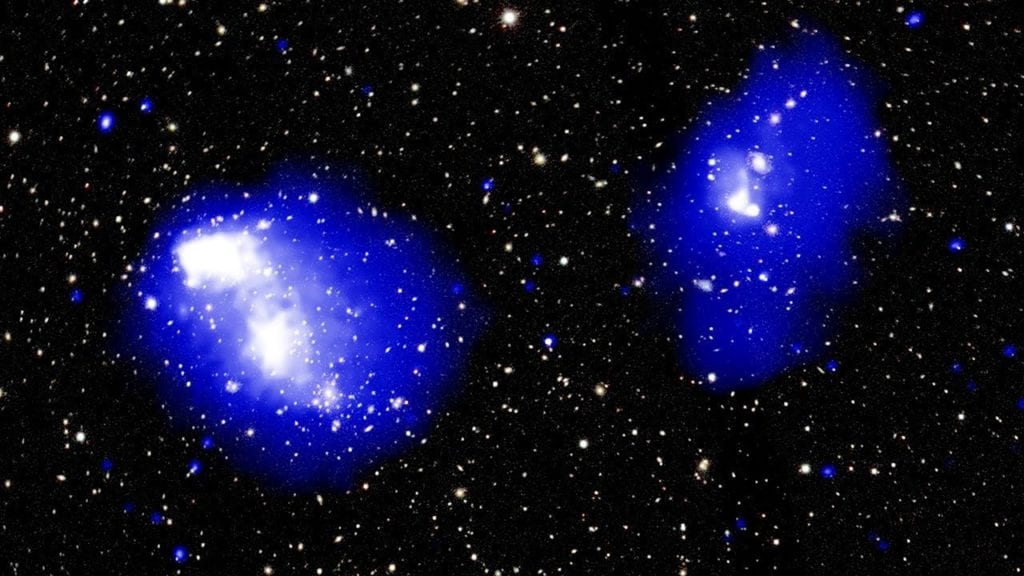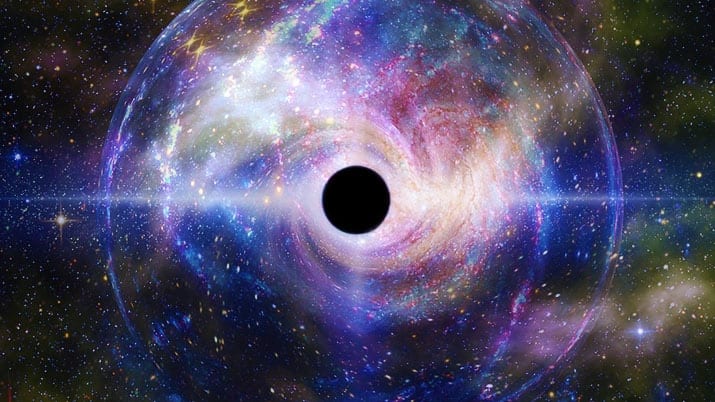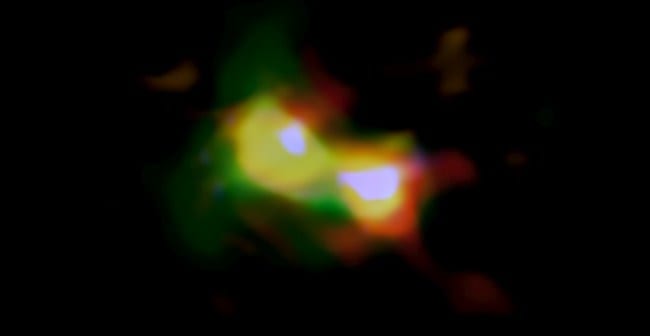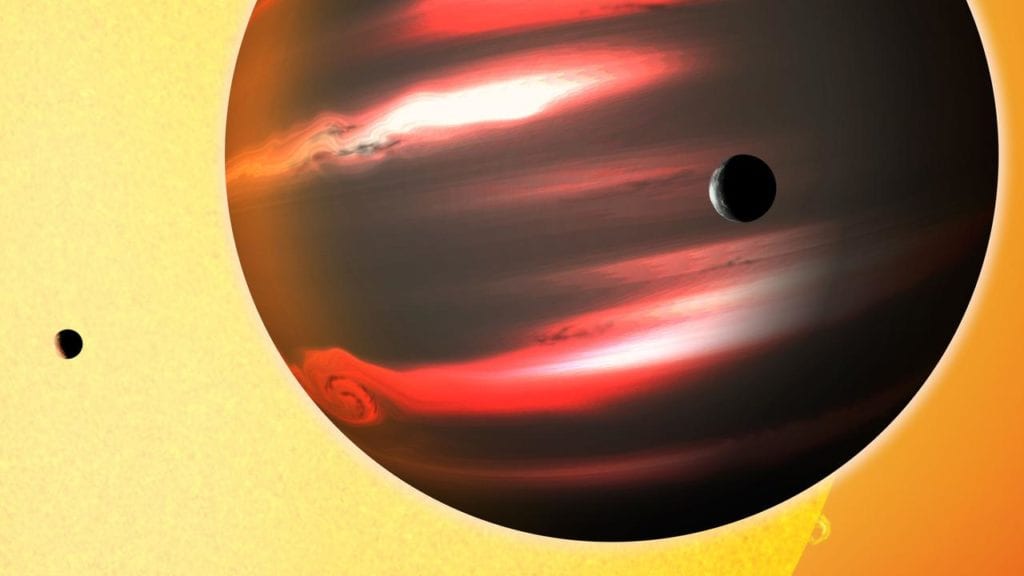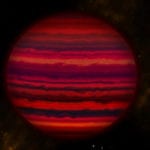10 Historical First Images Captured Of Space
10 A quasar that eats the equivalent of a star every single day
Imagine the power required to destroy and consume our Sun. Now imagine a celestial body doing that every single day. An entity like that exists, and it’s called J2157. J2157 is the fastest-growing black hole ever discovered. And it’s unimaginably massive: 34 billion-times the mass of the Sun. It’s also the brightest quasar yet discovered, a ravenous star-destroyer devouring the equivalent of one star per day. And it’s just as mind-warpingly distant as it is destructive: 12.5 billion light-years from Earth. It wasn’t expected that such an early black hole, from the days when the universe was about a billion years old, should be so massive. To get an idea of just how stupidly monstrous J2157 is, it’s 8,000 times more massive than Sagittarius A*, the 4-million-solar-mass black hole at the heart of the Milky Way. Even with the equivalent of 4 million suns in its belly, Sagittarius A* would need to consume more than 60 percent of the Milky Way’s stars to become as massive as J2157.[1]
9 A planetary collision births a world of iron
The cosmos is full of world-shattering acts of interplanetary violence. But planetary collisions create new worlds: bizarre ones, ten-times as massive as Earth and made mostly of metal. Kepler-107c resides in the Kepler 107 system, which contains four planets orbiting a Sun-like star, 1,700 light-years away. And by measuring the shift in wavelengths of light arriving from Kepler 107, astronomers detected the first-ever evidence of a planetary apocalypse occurring outside the solar system. A crash of cosmic bodies birthed Kepler-107c, which measures about 1.5 Earth-radii but is made of 70 percent iron, by mass. It’s super-dense, holding 12.6 grams of material per cubic centimeter, compared to Earth’s modest 5.5. 107c has a similarly-sized but lighter (only about 3.5 Earth-masses) sibling, Kepler-107b. Its density is a more Earth-like 5.3 grams per cubic centimeter. And its iron core only accounts for 30 percent of its mass. This suggests that the unexpectedly-iron rich Kepler-107c suffered a major collision at speeds of nearly 40 miles per second. The accident stripped Kepler-107c’s light silicate mantle, leaving a scarred, iron core with little else on top.[2]
8 A black hole is ripped from its galaxy
Black holes dictate the structure of the universe. With their immense gravity, they lay the foundation for massive galaxies by literally punching a dent in the fabric of space-time. And that’s why they’re usually found in the center of galaxies. But celestial forces can wrench even black holes from their galaxies and send them hurtling through space. Which is what happened to black hole XJ1417+52. It was spotted by the Chandra X-ray Observatory and the XMM Newton X-ray observatory, two space-born instruments that observe the universe in, you guessed it, X-rays. Black hole XJ1417+52 is located 4.5 billion light-years away in the outer reaches of a galaxy called GJ1417+52. It’s throwing off a stupendous amount of X-rays and smashing two cosmic records: it’s 10 times farther away and 10-times brighter (in X-rays) than any rogue black hole yet discovered. XJ1417+52 has the mass of 100,000 Suns and once anchored its own galaxy. But that galaxy collided with the much bigger galaxy GJ1417+52, which stole the black (along with its orbiting stars.[3]
7 Galaxies tear each other apart around the Milky Way
The Milky Way has many smaller satellite galaxies attracted to its monstrous pull. And the two most famous, the Small Magellanic Cloud (SMC) and the Large Magellanic Cloud (LMC), smashed into each other a few hundred million years ago. And the damage from that ancient collision is still occurring. The southeast portion of the Small Magellanic Cloud, or “Wing,” is floating away from the rest of the galaxy. The stars populating this region are moving in the same direction and at similar speeds, preserving the evidence of a collision hundreds of millions of years ago. If the stars were moving in a perpendicular direction, it would suggest that the SMC and LMC passed each other closely, but didn’t collide. But the runaway region of the SMC is moving toward the LMC, proving that the two galaxies collided head-on.[4]
6 Gravity dismantles small galaxies
Speaking of bad things happening to the Small Magellanic Cloud (SMC), it’s dying before our eyes. Some galaxies die glorious Viking deaths, torn apart by the gravity of some more massive object. But the SMC is dying a slow and undignified death. Even though the 200,000 light-year-distant SMC is one of the farthest objects visible to the unaided eye, it’s still not massive enough to retain all of its gas and dust. So it’s quickly hemorrhaging its life support, hydrogen gas, into space. The galactic assassin is gravity because the SMC doesn’t command enough of it. For every single star that the SMC produces, it loses ten times that amount in gas. But the SMC may yet enjoy a warrior’s death and earn its place in galactic Valhalla. Researchers believe it will be absorbed by the Milky Way before it dissolves into nothingness. Many other small galaxies will not be as lucky.[5] 10 Joys And Terrors Of Space Exploration
5 Solar systems throw planets thrown toward their star
Our innermost planet, Mercury, orbits the Sun in 88 days. But numerous observed super-Earths complete an orbit around their stars in just a few days. And now, new evidence points to a strange phenomenon that sends unsuspecting planets hurtling toward their sun. Solar system formation is, not surprisingly, tricky, with many forces at play. Magnetic forces, collisions small and large between swirling bodies, and good-old gravity are among the primary shapers. And when conditions are just right, these forces can push multiple planets into a conga line toward their star. The disk of particles that planets are born from, and the planets themselves, occasionally get locked into synchronized orbits. This “resonance” occurs as the planets and disk push and pull on each other. And the planets go tumbling inward. They gradually migrate to the inner reaches of their solar system, ending up in an orbital berth that’s too hot and barren to form planets.[6]
4 Clusters of galaxies smash into each other
Clusters of galaxies are zipping through space at millions of miles per hour. Sometimes they smash into each other and merge. Some ridiculously rare times, four galaxy clusters combine into one of the most massive structures the universe may ever see. About 3 billion light-years from Earth, the universe is assembling a massive mash-up of clusters called Abell 1758. Each cluster contains potentially thousands of stars, and they’ve all been caught in an irresistible gravitational embrace. Abell 1758 is split into two pairs of clusters. In the northern pair, the two clusters already swung by each other in the previous 300 million years. And they mixed their heavy elements together in a gravitational swirl, like a cosmic pinky swear, promising they’ll reunite once again. The sonic boom-like shockwave from the ancient encounter reveals the mind-boggling forces at play. The clusters, each a collective body of thousands of stars, passed each other at 2-3 million miles per hour. Gravity is pulling them back together again and will eventually smoosh them into the other two galaxy clusters, forming a quadruple-cluster-deluxe.[7]
3 Black holes gorge and spew like a fountain
Black holes appear to be surrounded by a calm donut-shaped disk. But in reality, black holes are vomiting super-hot matter all over themselves, like a fountain. When presented with a Golden Corral-amounts of gas and dust, even the most voracious black holes can’t consume it all. The debris accretes into a disk of in-falling gas, which plunges into the black hole’s maw with ferocity. It’s heated to millions of degrees and stripped into its constituent atoms and ions, which are expelled back into the galactic environment. Some of the black hole’s throw-up escapes into space and is never seen again. But some of the insanely-hot atomic gas is pulled back in by the insurmountable gravity to continue the cycle, circulating like water through a city fountain.[8]
2 Millions of stars explode into life as galaxies collide
Galactic collisions invoke images of destruction. And even though galaxies may be torn apart, and stars flung into space, collisions also ignite a mass birthing of stars. The earliest example comes from when the universe was a youthful billion years old, Even at the dawn of time galaxies, were already locked into a chaotic celestial mosh pit. Two of these galaxies, located 13 billion light-years away, have crashed into a gassy blob known as B14-65666. The bi-galactic blob isn’t huge. Its two constituents combined are only about 10 percent the mass of the Milky Way, which is expected at such an early stage in space-time. But despite its size, the blob is 100 times more active with star-birth than our own much more massive galaxy. Galactic pile-ups cause the compression of vast clouds of gas, triggering bursts of stellar birth by literally smashing stars into life.[9]
1 Jupiter-like planets are roasted to death
NGTS-10b is the closest-orbiting hot Jupiter ever discovered. This gas giant is 20 percent bigger and twice as massive as Jupiter. And it zooms around its 10-billion-year-old parent star so closely and quickly that its year only lasts 18 hours. When a planet is so close to its star that a year is 25 percent shorter than an Earth day, that planet is probably scorchingly hot. And NGTS-10b is getting roasted. Luckily, its star is 1000 degrees colder than our Sun. And 70 percent less massive. But, to scale, the planet is 27 times closer to its star than Mercury is to the Sun. So the average temperature on NGTS-10b is only around 1000 degrees Celsius (1800 degrees Fahrenheit). But since it’s (probably) tidally locked, the temperatures differ wildly between the permanent-day-side and the permanent-night-side. As we see it today, NGTS-10b could be serving the very last portion of its death sentence. In only 10 years, astronomers might be able to watch NGTS-10b’s final death-dive, as it spirals into its star’s fiery bosom.[10] 10 Space Myths We Believe Because Of Movies

